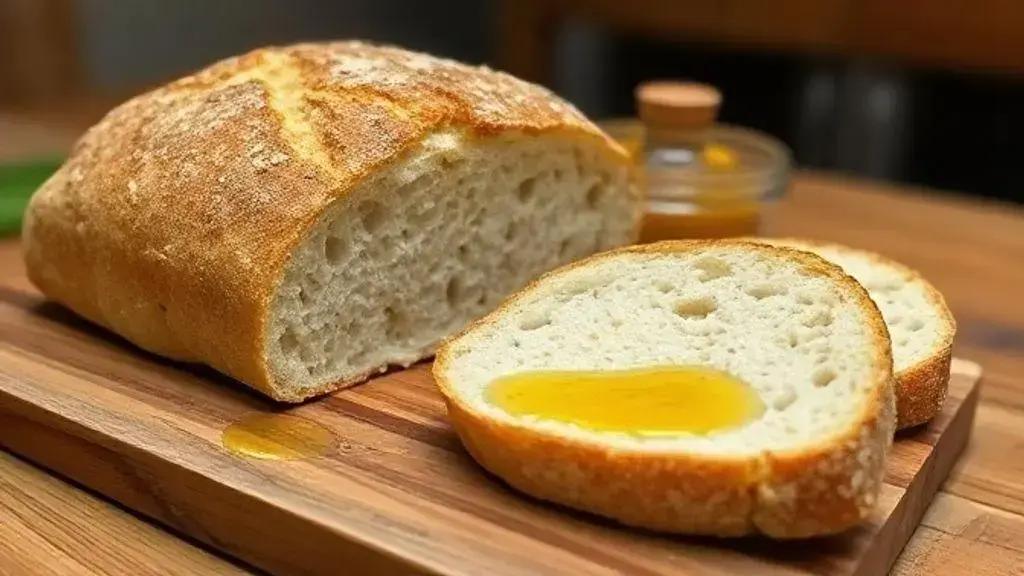Ingredients
Method
- Combine the dry ingredients: In a large bowl, mix flour, salt, and dry yeast.
- Make a well and add liquids: Pour in the lukewarm water and olive oil. Stir with a wooden spoon until a shaggy dough forms.
- Mix and rest: Knead gently in the bowl for 2 minutes. Cover with plastic wrap and let rest at room temperature for 1 hour, until doubled in size.
- Shape the dough: Sprinkle a surface with flour, turn the dough out, and lightly dust the top with flour. Handle carefully to keep the air pockets. Gently shape into a rectangle about 2 cm thick.
- Second rise: Cover with a towel and let rest for 45 minutes.
- Preheat the oven: Heat to 240°C (465°F) and place a baking stone or tray inside. Add a small tray of water to the bottom to create steam.
- Bake: Transfer the dough to the hot surface with parchment paper. Bake for 25-30 minutes until golden and the crust is crisp.
- Cool before slicing: Let cool on a rack for at least 30 minutes before slicing to enjoy the open crumb.
Notes
Ciabatta is a truly versatile Italian classic that combines a crisp, rustic crust with an airy, open crumb, making it perfect for sandwiches, appetizers, or simply enjoyed fresh out of the oven with olive oil. Its popularity stems from both its flavor and its unique texture—softly chewy inside and beautifully golden on the outside.
Practical Tips & Ingredient Swaps
- High-protein bread flour is ideal for a lighter, more open crumb. If you only have all-purpose flour, your ciabatta will still be delicious but a bit denser.
- If you want a deeper flavor, let the dough ferment in the refrigerator overnight. This slow rise enhances both the taste and texture.
- Be gentle when shaping the dough; stretching or overworking it can deflate the precious air bubbles responsible for ciabatta’s signature holes.
- You can replace some of the water with milk for a slightly richer crumb, or add chopped olives or roasted garlic for flavorful twists.
Baking Techniques
- Baking with steam is essential. Place a tray of water in your oven or spritz it just before baking to help create a crisp, professional crust.
- Use parchment paper or a well-floured peel to prevent sticking when transferring the dough.
- Letting the bread cool completely ensures the inside finishes setting—don’t slice too soon or you may compromise its airy crumb.
Serving Ideas & Variations
- Try ciabatta as a base for open-faced bruschettas, panini, or dipped in robust extra-virgin olive oil with a sprinkle of sea salt.
- For a classic touch, serve alongside hearty Italian soups or slice it for gourmet sandwiches packed with prosciutto, mozzarella, and arugula.
- Leftover ciabatta makes fantastic croutons or stale bread for panzanella salad.
